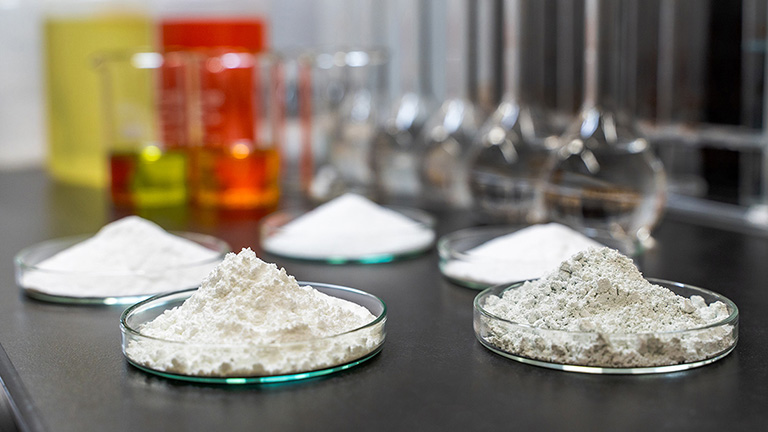Products
Molybdenum Compounds
Molybdenum (Mo) exhibits chemical versatility by forming numerous stable compounds, which are valuable at the cutting edge of various industrial fields.

Features
Multifunctional metal with a high melting point
Molybdenum (Mo), a transition metal with atomic number 42, is known for its high melting point as well as tungsten (W). It is mainly mined as sulfide (molybdenite) and not only used in metallic form for alloys but also applied for a variety of industrial fields as compounds. Molybdenum is particularly stable with oxidation state +6 and forms various (poly)molybdate ions in aqueous solution depending on pH and counteranions. Besides oxide (molybdenum trioxide), numerous molybdate salts are well known, including ammonium heptamolybdate and sodium molybdate.
High-performance materials driving modern innovation
Molybdenum compounds are widely used across diverse industrial fields, for instance, as a catalyst precursor in the petrochemical synthesis of acrylic acid (used in superabsorbent polymers) and methyl methacrylate (MMA, used in acrylic resins). Sodium molybdate is employed for metal surface treatment and corrosion inhibition, while molybdenum trioxide is used both as a catalyst precursor and as a feedstock for metallic molybdenum production. More recently, molybdenum trioxide has attracted attention for its applications in electronics and energy-storage materials. As outlined above, molybdenum compounds play a vital role in modern industry due to their chemical stability and versatility. Their importance is expected to increase as they help reduce environmental impact and develop advanced functional materials.
